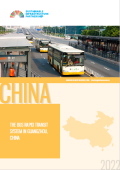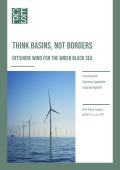
The case study details Guangzhou's successful implementation of a Bus Rapid Transit System which provides responsive, resilient and flexible service.

The case study details Japan's adoption of Ecosystem-based Disaster Risk Reduction to replace its ageing infrastructure.

The case study details Rwanda's strategic planning approach to the development of an Eco-Tourism Park in line with the national green Growth strategy.

The case study details Helsinki's exemplary use of it's underground spaces.

This case study presents an overview of initial assessments of the technical potential for offshore wind in the Black Sea. It also identifies policy-related barriers at the national and regional levels and provides a blueprint for policymakers to overcome them.

The Madre de Dios (MDD) region of Peru is a biologically and culturally diverse area that forms a key conservation corridor spanning 30 million hectares of protected areas in the Tropical Andes Biodiversity Hotspot, and connecting the Andean foothills with the Amazon. Prior to 2010, the construction of the interoceanic highway began. This road is an important economic corridor that crosses the Andes to connect ports on the Pacific coast with MDD as well as road networks beyond, all the way to São Paulo, Brazil.

Through the enactment of the Finance Act 2019 and issuance of the Green Bond Guidelines by the Capital Markets Authority, the government provided the enabling conditions for the successful issuance of the first sustainable infrastructure funding system that is based on an innovative financing instrument - Green Bonds (GB).

This case study reflects on the unexpected impact of a sustainable infrastructure project in Laos. The NT2 dam, which began operations in 2010, was promoted as a stateof-the-art, poverty-alleviating sustainable dam project for its grounding in extensive social and environmental research and monitoring at all stages of the infrastructure project cycle.

In 2014, 17 administrative wards in Ambikapur were chosen to pilot a new decentralized strategy by setting up Solid Liquid Resource Management (SLRM) centres. The strategy focused on empowering less privileged women through training on a variety of technical and soft skills related to waste management, including how to properly and hygienically dispose of and sort waste.

Colombia’s largest marsh ecosystem, the Ciénaga Grande de Santa Marta (CGSM), has experienced substantial erosion since the 1950s, when a highway was constructed along Salamanca Island. The Government of Colombia has proposed to refurbish and expand the highway to make it more resilient to coastal erosion and sea level rise, and to accommodate increased vehicle traffic. The proposal was a conventional “gray” design.
